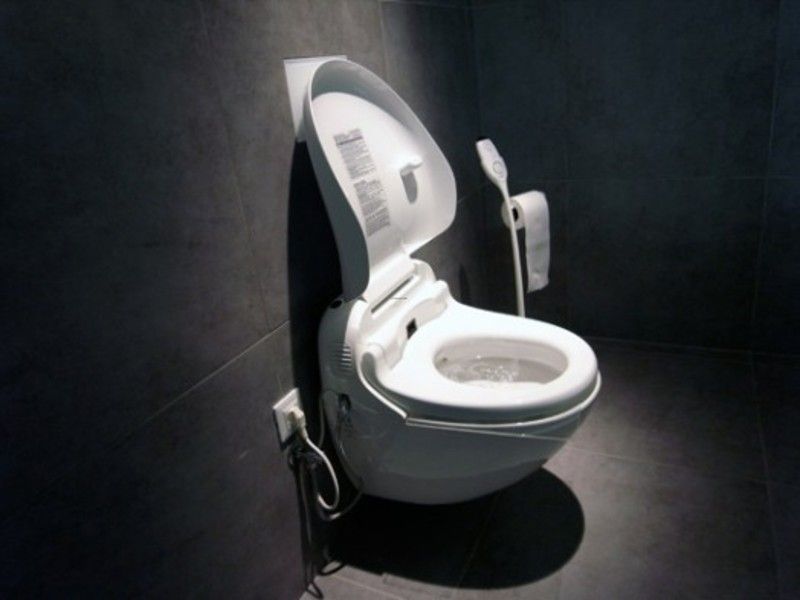In an era where smart devices seamlessly integrate into our daily routines, the advent of a hi-tech toilet capable of analyzing health through urine represents a groundbreaking leap in personal wellness monitoring. This intelligent bathroom fixture not only enhances the convenience of modern living but also empowers individuals with actionable health data right from the comfort of their own homes.
Introduction
The bathroom is traditionally viewed as a private sanctuary, a place of solitude and reflection. Today, it has become a nexus of innovation where cutting-edge sensors and data analytics converge to revolutionize preventive healthcare. The Smart Toilet Health Monitor transforms the simple act of using the restroom into an opportunity for early disease detection, dietary assessment, and lifestyle optimization. By harnessing the power of advanced biosensors, machine learning algorithms, and secure cloud infrastructure, this device delivers real-time insights about hydration, nutrient levels, metabolic markers, and potential warning signs of serious conditions such as kidney disease or diabetes.
How It Works
The inner workings of the Smart Toilet Health Monitor rely on a sophisticated suite of embedded technologies:
A. Multi-Spectral Optical Sensors – These sensors measure color, turbidity, and particulate presence in the urine to assess hydration status and detect abnormalities like blood or protein.
B. Electrochemical Biosensors – Electrodes coated with specialized enzymes identify biomarkers such as glucose, ketones, and creatinine, providing quantitative readings for metabolic health.
C. pH and Conductivity Probes – By gauging urine pH and electrical conductivity, the system infers kidney function, electrolyte balance, and risk factors for urinary tract infections or stone formation.
D. Data Processing Unit – A miniaturized onboard computer aggregates sensor inputs, executes edge analytics, and transmits encrypted data to a companion smartphone app or cloud service.
E. Machine Learning Engine – Continuously updated algorithms compare individual readings against large datasets to deliver personalized trend analyses and predictive health alerts.
Key Features
Real-Time Health Dashboard
Users access an intuitive interface either on a mobile app or web portal presenting daily, weekly, or monthly summaries. Charts and graphs illustrate fluctuations in hydration, metabolite concentrations, and pH levels. Color-coded alerts flag values outside healthy ranges.
Personalized Trend Analysis
Machine learning models adjust baselines according to each user’s unique physiology, age, gender, and lifestyle. Over time, the system discerns patterns that might elude occasional laboratory tests, enabling early intervention when subtle deviations occur.
Custom Health Recommendations
Based on collected data, the Smart Toilet Health Monitor offers tailored suggestions:
A. Dietary Adjustments – Guidance on increasing specific nutrients or reducing salt and sugar intake.
B. Hydration Reminders – Timely notifications to prevent dehydration or overhydration.
C. Medical Referrals – Alerts prompting users to seek professional evaluation if parameters suggest potential kidney dysfunction, diabetes, or infection.
Secure Data Management
Privacy and security are paramount. All data transmissions use end-to-end encryption. Users retain control over data sharing preferences, with options to collaborate with healthcare providers or share anonymized trends for medical research.
Health Benefits and Applications
1. Early Disease Detection
Ongoing monitoring can reveal biomarkers indicative of chronic conditions at early stages often before clinical symptoms appear. For instance, microscopic levels of albumin in urine may signal kidney impairment, allowing prompt medical management.
2. Chronic Disease Management
Patients with diabetes or hypertension can track urinary glucose levels and electrolyte balance to optimize medication dosages and dietary plans, reducing hospitalizations and improving quality of life.
3. Fitness and Nutrition Optimization
Athletes and fitness enthusiasts benefit from detailed hydration metrics and metabolic readouts, ensuring peak performance and recovery through precise nutrient and fluid intake.
4. Elderly Care
For seniors, remote monitoring facilitates unobtrusive tracking of renal function and hydration status, alerting caregivers to potential issues such as urinary tract infections or dehydration.
Installation and Maintenance
Setting up the Smart Toilet Health Monitor is designed to be as simple as replacing a standard toilet seat:
A. Plug-and-Play Attachment – The sensor module fits beneath the seat without plumbing modifications.
B. Wireless Pairing – Bluetooth or Wi‑Fi connectivity links the device to the user’s smartphone or home network.
C. Cartridge Replacement – Consumable cartridges containing reagent substrates require replacement every three to six months, depending on usage frequency.
D. Automated Calibration – The system auto-calibrates at startup, ensuring accuracy without manual intervention.
Data Privacy and Compliance
Adhering to global regulations such as HIPAA in the United States and GDPR in Europe, the Smart Toilet Health Monitor safeguards personal health information. Data storage occurs on secure servers with multi-factor authentication. Users can export reports in standardized formats (e.g., PDF, CSV) for consultations or second opinions.
Future Developments
Innovation continues at a rapid pace. Upcoming enhancements may include:
A. Expanded Biomarker Panel – Detection of hormones, vitamins, and pharmaceutical metabolites for deeper health insights.
B. AI-Powered Diagnostics – Integration of advanced neural networks for automated preliminary diagnoses.
C. Interconnected Smart Home Ecosystem – Seamless interactions with fitness trackers, smart scales, and dietary apps to curate holistic wellness profiles.
D. Multilingual Voice Assistance – Voice-activated summaries and alerts for enhanced accessibility.
Challenges and Considerations
Despite its promise, the Smart Toilet Health Monitor faces several hurdles:
A. Sensor Longevity – Ensuring consistent sensor performance over extended periods amid exposure to harsh waste environments.
B. User Adoption – Overcoming privacy concerns and encouraging regular use to realize long-term health benefits.
C. Cost Barriers – Balancing advanced features with affordability to reach diverse socioeconomic groups.
D. Regulatory Approvals – Navigating complex medical device classifications across different jurisdictions.
Conclusion
The Smart Toilet Health Monitor exemplifies the convergence of everyday convenience and transformative healthcare. By turning routine restroom visits into opportunities for in-depth health analysis, it empowers individuals to take proactive control of their well-being. As technology advances and adoption grows, such intelligent systems promise to reshape preventive medicine, reduce healthcare costs, and ultimately enhance quality of life for millions worldwide.










